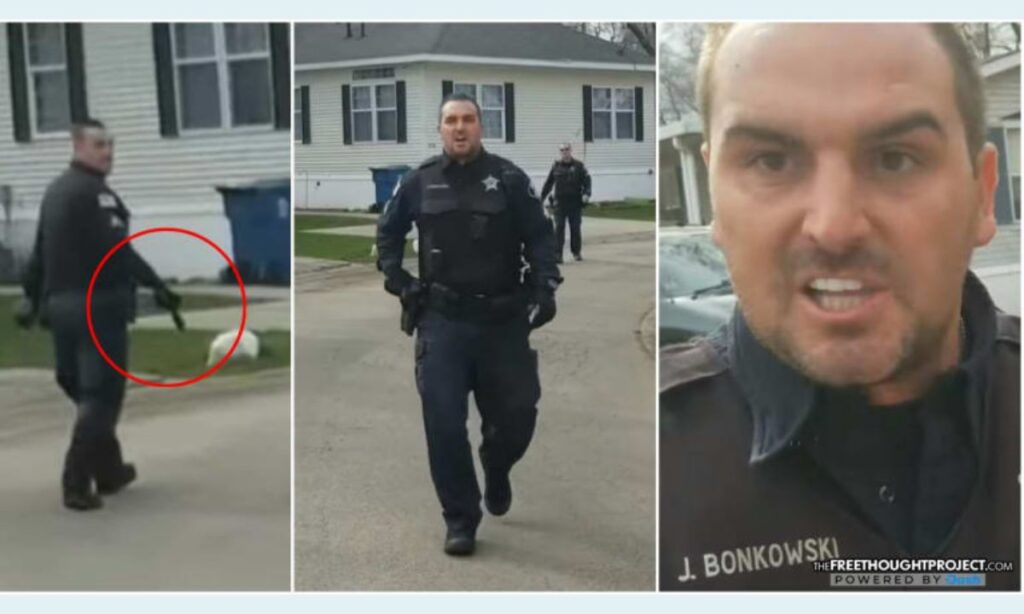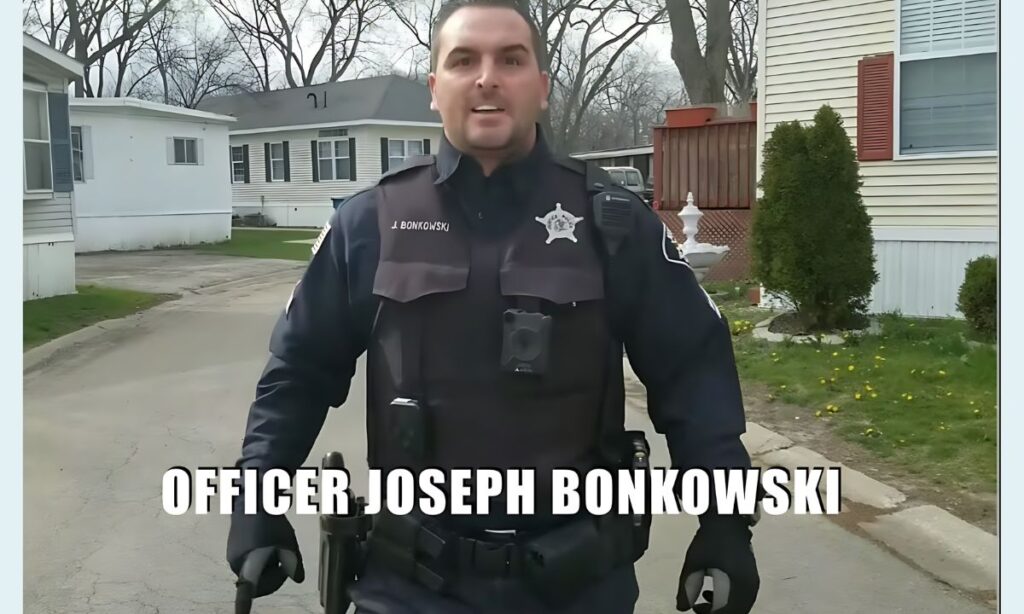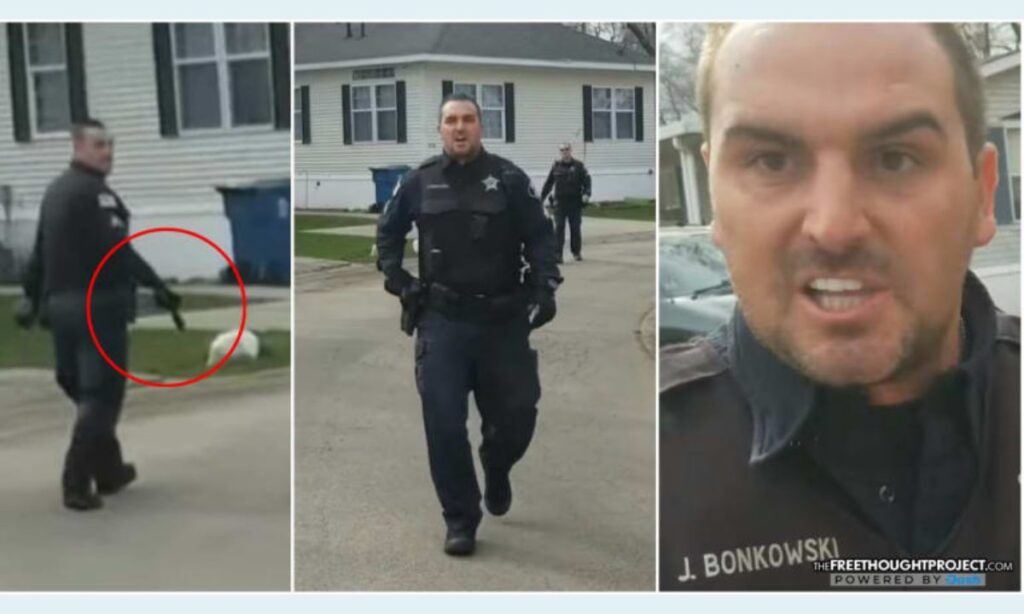In recent years, the spotlight on police conduct has intensified, with public scrutiny reaching unprecedented levels. One case that exemplifies this trend is the controversial incident involving Officer Bonkowski of the Chicago Police Department (CPD). This article delves into the details of what transpired, the ensuing legal battle, and the broader implications for police accountability in the United States.
The Officer Bonkowski incident serves as a microcosm of the larger issues surrounding law enforcement practices, civilian rights, and the evolving landscape of public oversight in the digital age.
Incident Involving Officer Bonkowski and Recording

On a seemingly ordinary day in Chicago, an encounter between Officer Bonkowski and a civilian would spark a nationwide conversation about civilian recording rights and police conduct. The incident, which occurred in a bustling neighborhood, quickly escalated from a routine interaction to a controversial confrontation that would change the trajectory of Bonkowski’s career and impact police-community relations in Chicago.
The Controversial Recording
At the heart of this incident lies a video recording that captured Officer Bonkowski’s aggressive demeanor towards a civilian who was exercising their First Amendment rights by filming police activity. The footage, which rapidly spread across social media platforms, showed the officer allegedly:
- Approaching the civilian in a confrontational manner
- Demanding that the individual stop recording
- Attempting to confiscate the recording device
- Using excessive force to arrest the civilian for recording
This incident immediately raised questions about the legality of arresting for recording and the boundaries of police authority in public spaces. The video, which lasted approximately three minutes, showed Officer Bonkowski becoming increasingly agitated as the civilian calmly asserted their right to film.
The officer’s body language and tone, as captured in the footage, suggested a clear escalation of the situation, contrary to de-escalation techniques that are part of modern police training.
Public Reaction and Immediate Aftermath
The public’s response to the video was swift and decisive:
- Widespread outrage on social media, with the hashtag #BonkowskiIncident trending nationally
- Calls for Officer Bonkowski’s dismissal from the police force, including petitions garnering thousands of signatures
- Demands for a federal investigation into the CPD’s practices and training procedures
- Renewed discussions about police reform and accountability, with civil rights organizations issuing statements
The CPD initially placed Officer Bonkowski on administrative leave pending an internal investigation. However, as public pressure mounted and the video continued to circulate, it became clear that this incident would have far-reaching consequences.
Local community leaders organized peaceful protests outside the CPD headquarters, calling for transparency and justice. The incident also reignited debates about the effectiveness of police sensitivity training and the need for more robust community policing initiatives.
Indictment and Charges Against Former Police Officer

The controversial incident involving Officer Bonkowski didn’t end with his suspension. As the wheels of justice began to turn, the case took on new dimensions, leading to a formal indictment and criminal charges.
The Investigation Process
Following the public outcry, a multi-pronged investigation was launched:
- Internal Affairs Division of the CPD
- State Attorney’s Office
- Federal Bureau of Investigation (FBI)
This comprehensive approach ensured that no stone was left unturned in examining the incident. Investigators pored over the viral video, interviewed witnesses, and scrutinized Officer Bonkowski’s past conduct records. The investigation lasted several months, during which time Officer Bonkowski remained on unpaid leave.
Key aspects of the investigation included:
- Forensic analysis of the video footage to determine its authenticity
- Interviews with over 50 witnesses, including bystanders and fellow officers
- Review of Officer Bonkowski’s body camera footage (which was allegedly turned off during the incident)
- Examination of Officer Bonkowski’s service record and any prior complaints
Charges Filed
After a thorough investigation, the State Attorney’s Office brought forth several charges against Officer Bonkowski. These included:
| Charge | Description | Potential Penalty |
| Assault and Battery | For the physical altercation with the civilian | Up to 1 year imprisonment |
| Unlawful Arrest | For arresting the civilian without probable cause | Up to 5 years imprisonment |
| Violation of Civil Rights | For infringing on the civilian’s First Amendment rights | Up to 10 years imprisonment |
| Official Misconduct | For abusing his position as a law enforcement officer | Up to 5 years imprisonment |
| Intimidation | For attempting to prevent the civilian from exercising their right to record | Up to 3 years imprisonment |
These charges reflected the gravity of the incident and the legal system’s response to alleged police misconduct. The indictment sent shockwaves through the law enforcement community and was hailed as a significant step towards accountability by civil rights advocates.
Legal Proceedings
The legal battle that ensued was closely watched by the public, media, and law enforcement agencies across the country. Key developments included:
- Officer Bonkowski pleaded not guilty to all charges
- The defense argued that the officer was following department protocols and acting under the stress of a potentially volatile situation
- Prosecutors presented evidence of a pattern of misconduct, including previously unreported incidents
- Expert witnesses testified on civilian recording rights and proper police conduct
- The trial lasted three weeks, with extensive media coverage and daily protests outside the courthouse
As the trial progressed, it became a focal point in the national debate on police accountability and the rights of citizens to document law enforcement activities. Legal experts weighed in on the case’s potential to set precedents for future incidents involving civilian recordings of police actions.
What Happened To Officer Bonkowski?

The fallout from the incident had profound implications for Officer Bonkowski, both professionally and personally. The case became a cautionary tale within law enforcement circles and a rallying point for police reform advocates.
Professional Consequences
The Chicago Police Department, facing intense public pressure and scrutiny, took decisive action:
- Officer Bonkowski was initially suspended without pay for 30 days
- An internal review board, after a six-week investigation, recommended his termination
- The Police Superintendent accepted the recommendation, leading to Bonkowski’s dismissal from the police force
- Bonkowski’s police pension was revoked, a rare move that underscored the severity of his actions
This dismissal marked a significant moment in the department’s history and sent a clear message about the consequences of violating public trust. It also sparked debates within police unions about the level of support they should provide to officers accused of misconduct.
Personal Ramifications
The incident and subsequent legal proceedings took a toll on Officer Bonkowski’s personal life:
- Media coverage led to widespread public recognition and scrutiny, making it difficult for him to maintain privacy
- He faced social ostracism and threats to his personal safety, necessitating temporary relocation
- Financial strain due to legal fees and loss of employment forced him to sell his home and declare bankruptcy
- Potential long-term career impacts in law enforcement and other fields, with many employers hesitant to hire someone with his background
- Strain on personal relationships, including a divorce filing by his spouse
The case serves as a stark reminder of the personal costs associated with police misconduct allegations, regardless of the final legal outcome.
Broader Implications
The Bonkowski incident catalyzed several changes within the CPD and had ripple effects across the nation:
- Policy Changes: The CPD revised its policies on civilian recording, emphasizing officers’ obligation to respect First Amendment rights. This included clear guidelines on when and how officers can interact with individuals recording police activities.
- Training Reforms: Enhanced training programs were implemented to address de-escalation techniques and community relations. This included role-playing scenarios specifically dealing with civilians recording police actions.
- Transparency Initiatives: The department introduced body cameras for all officers and established a civilian oversight board with subpoena power to investigate complaints against officers.
- National Conversation: The case contributed to the ongoing dialogue about police reform and accountability across the United States. It was cited in Congressional hearings on police reform and influenced policy discussions in other major cities.
- Legal Precedents: The case set important legal precedents regarding the rights of civilians to record police activities and the limits of officer discretion in such situations.
“The Bonkowski incident serves as a watershed moment in our department’s history, prompting us to reevaluate and strengthen our commitment to serving and protecting all members of our community with respect and integrity.” – Chicago Police Superintendent
The incident also led to a series of community outreach programs aimed at rebuilding trust between the CPD and Chicago residents. These included regular town hall meetings, youth engagement initiatives, and a citizen police academy to educate the public on law enforcement procedures.
Conclusion
The Officer Bonkowski incident stands as a powerful example of the complex interplay between law enforcement, civilian rights, and public accountability. It underscores the importance of transparency, proper training, and clear guidelines for police conduct in an era where every interaction can potentially be recorded and scrutinized.
As the legal process continues to unfold, the case remains a touchstone in discussions about police reform and community relations. It serves as a reminder that the actions of individual officers can have far-reaching consequences, not only for their careers but for the entire law enforcement community and the public they serve.
Moving forward, it is crucial for both law enforcement agencies and civilians to:
- Stay informed about rights and responsibilities
- Engage in open dialogue to build mutual understanding
- Support initiatives that promote accountability and transparency
- Work collaboratively to create safer, more trusting communities
The Officer Bonkowski incident, while troubling, has the potential to serve as a catalyst for positive change. By learning from this case and implementing meaningful reforms, we can strive towards a future where the relationship between law enforcement and the communities they serve is built on a foundation of trust, respect, and mutual accountability.
Also Read : Discover Ryan Cramer Net Worth: How He Built His Wealth

Howdy is the founder and lead writer behind the independent blog tvspluto.com